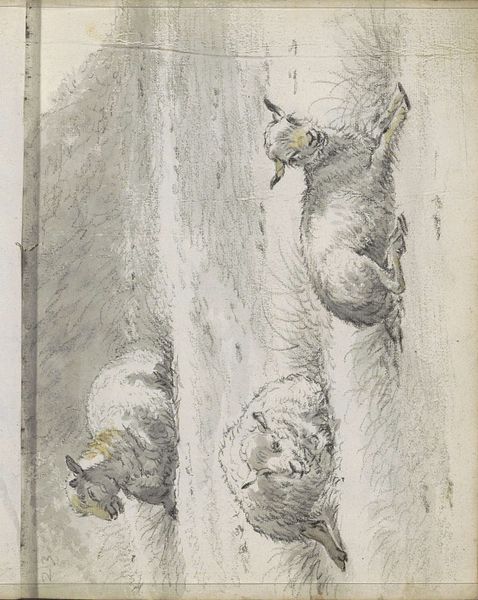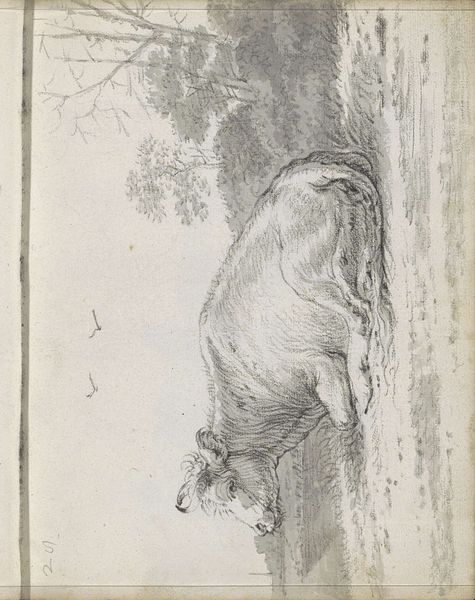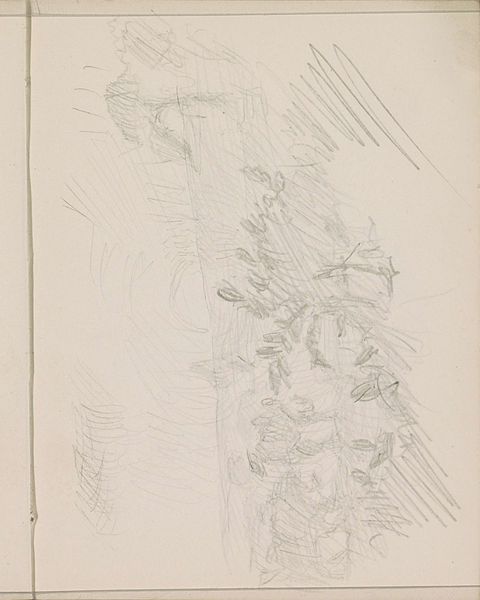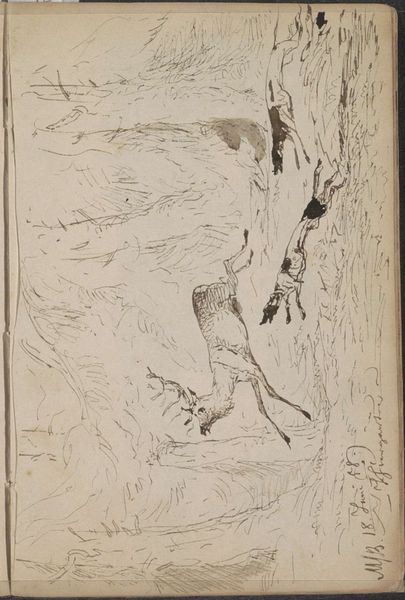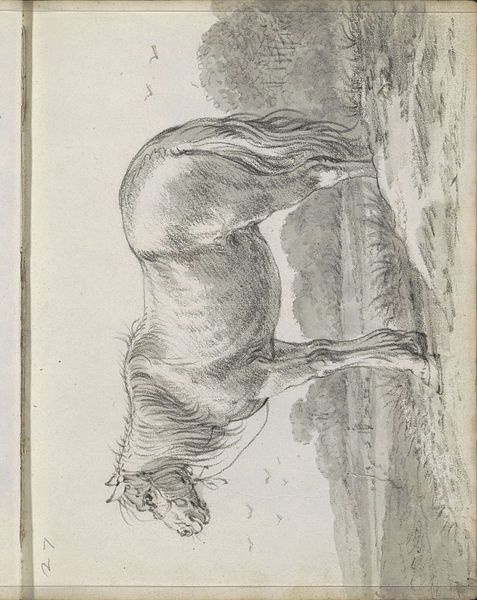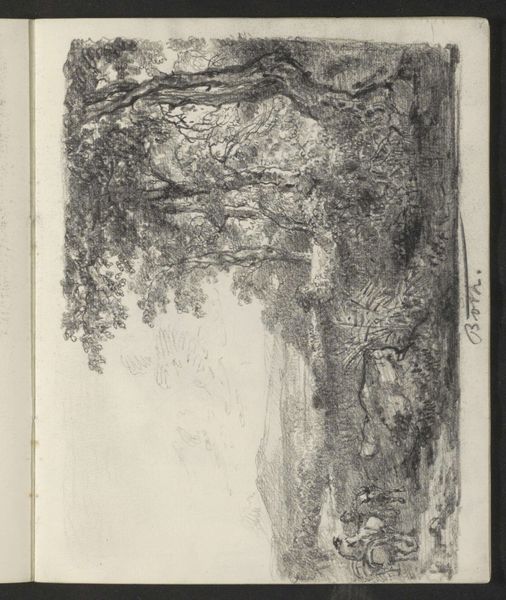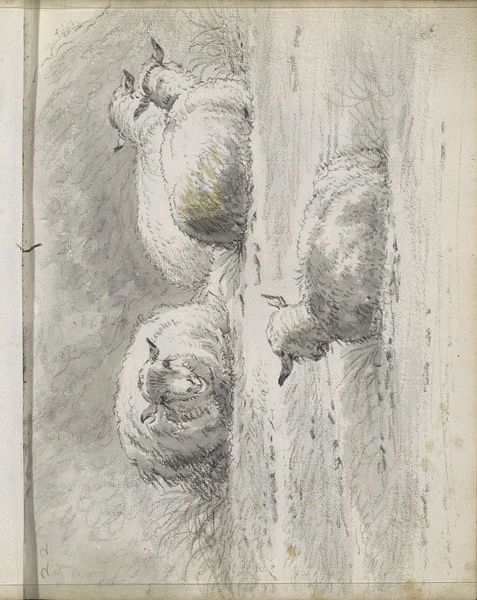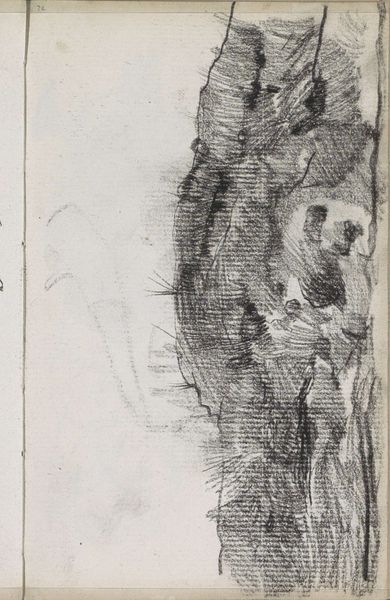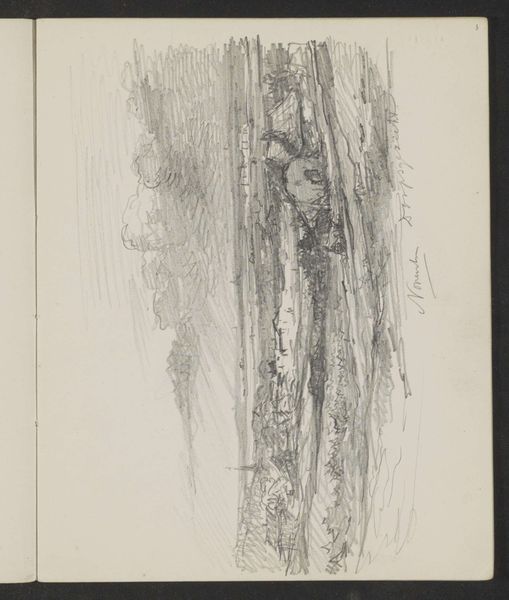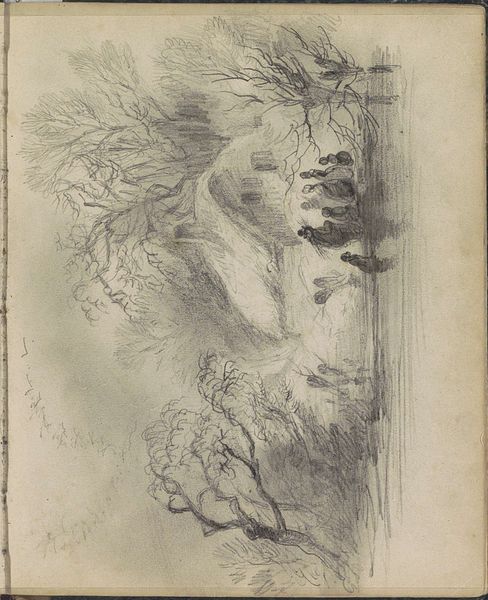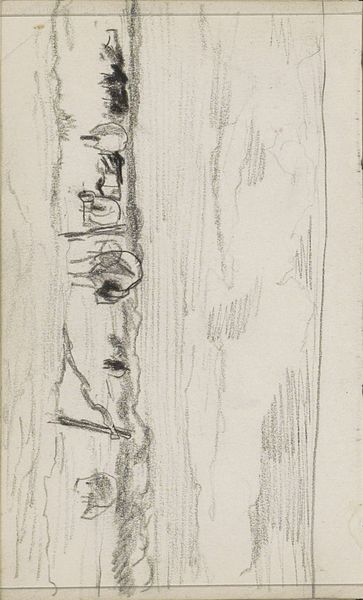
drawing, pencil
#
tree
#
drawing
#
dutch-golden-age
#
pencil sketch
#
landscape
#
figuration
#
pencil
#
watercolor
#
realism
Copyright: Rijks Museum: Open Domain
Editor: Here we have Cornelis Saftleven’s "Two Lying Cows Under a Tree," created around 1666 using pencil and watercolor. There's a simplicity to the composition that's quite striking, almost dreamlike. What jumps out at you when you look at this piece? Curator: What I see are enduring symbols of peace and bounty. Cows, even now, evoke the pastoral, a retreat to an idealized rural past. Saftleven gives us a scene seemingly untouched by the anxieties of the 17th century. Do you find the positioning of the cows, nestled under the tree, particularly significant? Editor: Well, it feels protective, as though the tree is sheltering them, lending a sense of tranquility. It also highlights the interconnectedness of nature, wouldn't you agree? Curator: Exactly. The tree acts as a visual metaphor for shelter, rootedness, and perhaps even wisdom, given its age. In a broader context, consider how this scene speaks to Dutch identity during the Golden Age, reflecting their agricultural prosperity and connection to the land. This seemingly simple image taps into a deep well of cultural memory. Does knowing that influence how you view the work now? Editor: It does, definitely. I was initially drawn to its calmness, but understanding its symbolic weight adds a layer of meaning I hadn't considered. It makes me think about how artists use familiar images to connect with a culture’s shared history and values. Curator: Precisely. And that is the enduring power of visual symbols, constantly shaped by time and culture. Editor: I learned that even an unpretentious sketch contains subtle symbolic language. Curator: Absolutely, and this knowledge enriches our view of our collective memory and experience.
Comments
No comments
Be the first to comment and join the conversation on the ultimate creative platform.

